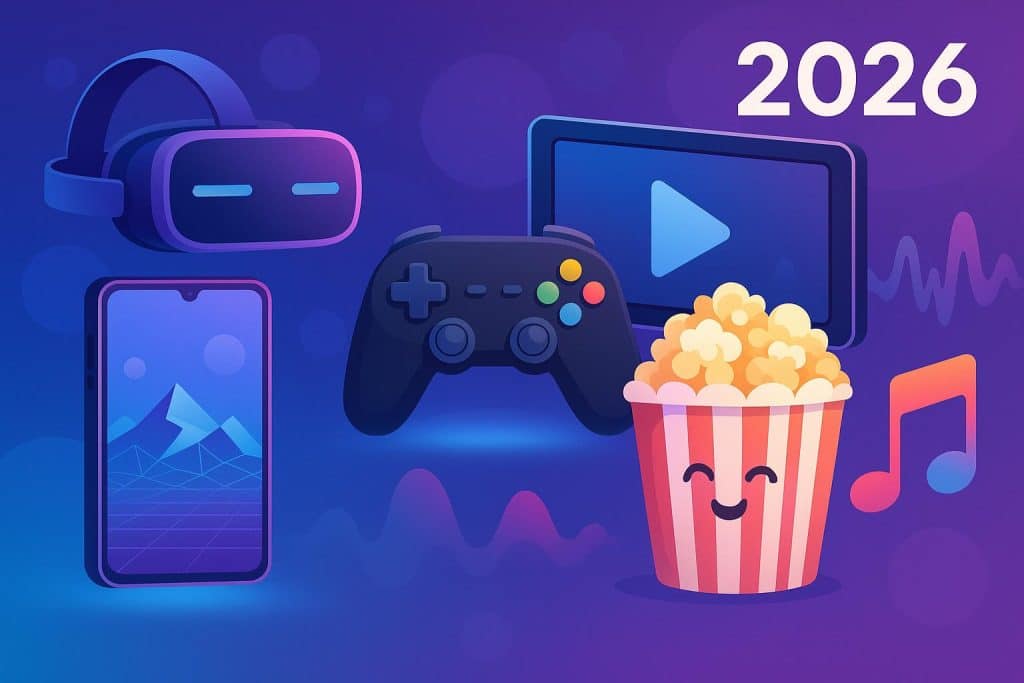The digital entertainment landscape continues to evolve rapidly, transforming how people consume content and interact with media. As technology advances, audiences have more options than ever, spanning streaming services, interactive gaming, virtual experiences, and social media platforms. By 2026, several key trends are expected to shape the way people engage with digital entertainment.
1. Streaming Services Expansion
Streaming platforms have dominated the past decade, and their influence shows no signs of slowing. In 2026, we can expect:
- Increased Subscription Options: Platforms will continue to offer tiered subscriptions, including ad-supported and premium ad-free models.
- Localized Content: Services will produce more region-specific programming to cater to diverse audiences worldwide.
- Interactive Features: Viewers may engage with content through polls, choose-your-own-adventure formats, and live interactions during broadcasts.
2. Cloud Gaming and Interactive Play
Cloud gaming has opened the door to high-quality gaming experiences without the need for expensive consoles or PCs. By 2026, cloud gaming is expected to:
- Expand into mobile and cross-platform play.
- Offer instant access to high-end titles with minimal latency.
- Incorporate social features, allowing friends to join sessions without hardware restrictions.
This accessibility is reshaping how gamers approach both casual and competitive play, leveling the playing field across devices.
3. Virtual and Augmented Reality Experiences
Immersive technologies like virtual reality (VR) and augmented reality (AR) are becoming more mainstream. The trend toward immersive digital entertainment in 2026 includes:
- Virtual concerts and live events where attendees interact as avatars.
- AR-enhanced storytelling in films, television, and mobile apps.
- Integration with e-commerce, where users can virtually try products within games or entertainment apps.
VR and AR create a more engaging experience, blurring the line between passive viewing and interactive participation.
4. Short-Form and User-Generated Content
Short-form video and user-generated content continue to attract large audiences. Platforms are optimizing for quick engagement and creative expression:
- Vertical video formats optimized for mobile viewing.
- AI-assisted editing and content creation tools that allow users to produce professional-looking clips.
- Community-driven challenges and collaborations that boost interactivity.
The rise of creators and influencers is shaping entertainment trends, making content consumption a two-way street.
5. AI-Powered Personalization
Artificial intelligence is increasingly applied to recommend content tailored to individual preferences. By 2026, AI is expected to:
- Suggest shows, movies, and games based on mood, viewing habits, and social trends.
- Personalize advertisements and promotions to align with user interests.
- Assist creators with scriptwriting, editing, and visual effects to enhance production efficiency.
AI integration allows for a more customized and immersive experience, keeping audiences engaged longer.
Digital Entertainment Trends at a Glance
| Trend | Description | Impact |
|---|---|---|
| Streaming Services | Localized and interactive content | Enhanced viewer engagement |
| Cloud Gaming | Instant access to high-quality games | Cross-platform accessibility |
| VR & AR Experiences | Immersive concerts, films, and AR storytelling | Increased audience interactivity |
| Short-Form & User-Generated Content | Mobile-first, AI-assisted creation | Fosters creative communities |
| AI-Powered Personalization | Tailored recommendations and production tools | More efficient content consumption |
Platforms like FIRST.com are helping audiences and creators alike explore these trends, offering tools, analytics, and insights to navigate the evolving digital entertainment landscape.
Looking Ahead
As digital entertainment continues to grow, the lines between gaming, streaming, social interaction, and immersive experiences will increasingly blur. Audiences will expect higher interactivity, more personalized content, and seamless access across devices. For creators and platforms, staying ahead of these trends will be key to capturing attention and delivering memorable experiences.
By 2026, digital entertainment will not only be about watching or playing—it will be about participating, interacting, and connecting in ways previously unimaginable.
